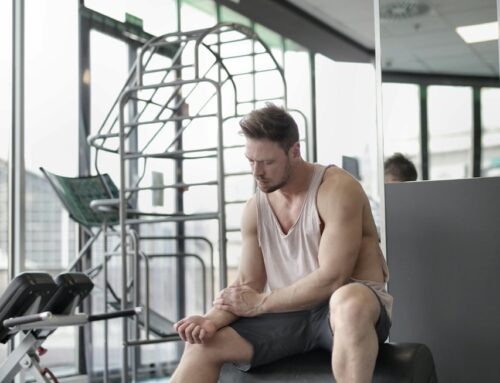Neck and back pain is a common problem in adults. This can happen for many reasons, such as poor posture, lack of mobility, and poor health.
Some treatments for back pain include rest, medication, and heat or ice, but massage can also be helpful for short-term signs and symptom relief.
You can try giving yourself a massage to relieve your back pain or see a good friend, family member, or specialist for soft tissue pain.
Does massage help with back pain?
There are many published studies demonstrating that massage can relieve back pain. The American Massage Therapy Association points out that the study supports the idea that massage therapy works for persistent low back and back pain and may also provide long-term benefits. The benefits of back massage are as follows:
- Reduces or relieves pain
- Relaxes tight muscles
- Increases blood flow
- Reduces stress and anxiety
- Returns to normal activities
- Complements conventional treatments such as taking anti-inflammatory painkillers and applying ice or heating pads
A physical therapist or massage specialist may offer therapeutic massages. A physical therapist will undoubtedly include massage as part of the therapy plan, which may consist of light workouts and stretching. Many people find a massage therapist themselves if the back and lower back pain is due to muscle tension. Massage for muscle stress is usually all that is required to relieve pain.
Kinds and Styles of Massage
There are two standard types of massage: general and structural. Full body massage promotes essential relaxation. Spinal massage techniques that target specific muscle mass and connective tissue are called structural massage therapies. Structural massage, targeting the muscles from the buttocks to the neck, relieves neck and back pain.
Some massage techniques include a full-body massage focusing on the target area. However, all types of massage can relieve pain. The ideal massage that has the most significant impact depends on what is causing the pain as well as the choice of the client. Various types of massage include but are not limited to:
Swedish massage is a gentle full-body massage to relax and relieve muscle knots.
Shiatsu massage is a Japanese-style full-body massage that uses a pulsating load and focuses on areas of the body that require concentration.
Trigger point massage is a full-body massage that includes additional concentration on specific areas of pain caused by stiffness (trigger points) in the muscle tissues.
Deep Tissue Massage is a full body massage that uses pressure to release tension in the much deeper layers of connective tissue and muscle tissue.
Other massage styles, such as reflexology and sports massage, are among the most common. For people who experience back pain, massage can provide much-needed relief. There is no recommended number of sessions, as each situation is individual.
Types of back pain
There are two types of pain in the back, and the duration of the pain determines them.
Acute neck and back pain resolves within three months, and for 90 percent of people with acute back pain, it only lasts a week or two. Another form of neck and back pain is persistent back pain that lasts longer than three months.
Massage might have the ability to assist with both kinds of neck and back pain, but it may offer even more alleviation for those with severe pain in the back.
The American Clinical Guidelines & Recommendations include massage therapy as an alternative treatment for severe neck and back pain. Still, they do not offer it to people with chronic back pain.
However, you can still try massage to relieve persistent back pain temporarily.
A 2011 Reliable Source study published in the Annals of Internal Medicine found that massage benefits people with persistent back pain for six months. But after a year, those who received the massage in addition to other treatments experienced the same level of symptoms as those who did not receive massage.
The temporary benefits of massage for persistent neck and back pain included:
- Minimizing time spent in bed.
- Improving the ability to perform daily activities.
- Using far fewer drugs to treat back pain.
The main causes of pain
Sources of pain in the neck and back include:
- falling
- lifting heavy objects
- muscle tension or sprain
- bad position
- sedentary lifestyle
- passive lifestyle
- bending the back forward while doing work
Some of these roots can lead to health conditions that cause neck and back pain, or the conditions themselves can lead to back pain, including:
- protrusions, tears, or degenerative discs in the spine
- joint inflammation
- skeletal anomalies
- osteoporosis
When to Call a Professional
You may find that your massage efforts in the house aren’t sufficient to alleviate your lower back pain.
Consider seeking a specialist masseuse to provide massage or another expert, like a chiropractor or physical therapist, to ease your back pain. These initiatives by experts might help relieve your pain in the back.
You might want to set up a doctor’s appointment if your lower back pain is severe or long-lasting.
A medical professional can identify the nature of your discomfort and help you take care of pain in the back that contradicts your life. They might advise various therapies to help with severe pain in the back. Some therapy suggestions may include:
- bed rest
- physiotherapy
- medicines, for example, non-steroidal anti-inflammatory drugs (NSAIDs) or muscle depressants
- applying heat or ice
- modifications to daily tasks, such as avoiding long rest periods
- less stress on the back
- back support
The bottom line
Ask friends or relatives if they can give you a massage, seek help from a professional, or try doing the massage yourself with a tennis ball or foam roller.
These techniques can relieve pain and also help you stay active. Tell your doctor about chronic back pain or acute back pain that is interfering with your daily life. You may need a much more varied monitoring plan that entails other treatments to minimize discomfort.




